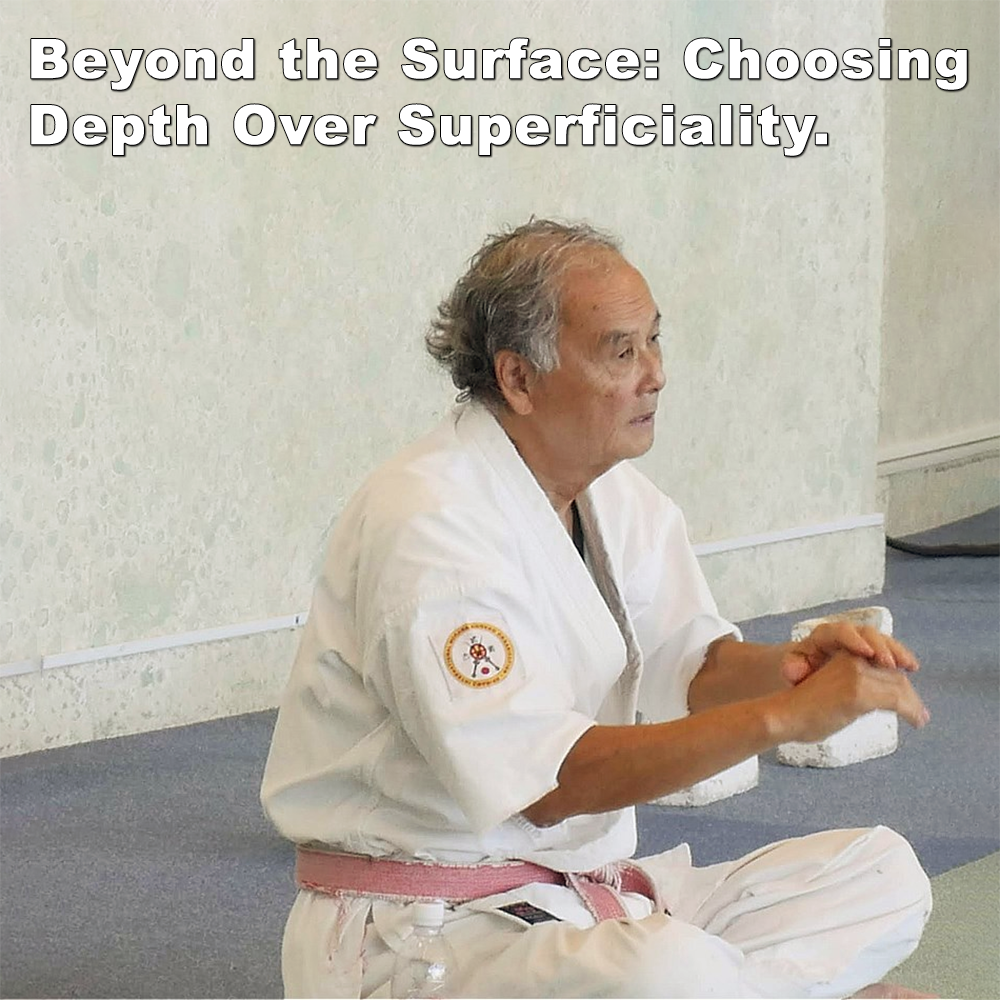
Beyond the Surface: Choosing Depth Over Superficiality.
Posted by ADAM CARTER on AUG 23, 2024

Beyond the Surface: Choosing Depth Over Superficiality.
(Approx 2 minute 10 second read)
An interesting comment said, “Maybe in order to truly understand and utilize kata, we need to reduce the number. Think about it – most martial arts are pressed for time. We are trying to teach people to win competitions, pass gradings, and possibly add applications/bunkai/self-defense. Usually, on a couple of hours a week, something has to be sacrificed.”
For many, this comment is unfortunately true. In my opinion, this is a major flaw in modern karate. It’s trying to be everything to everyone.
If this is your choice – to “possibly add applications/bunkai/self-defense” – you really are missing the point of karate, as these are the fundamentals. I’ve written about this before; giving lip service to these essential components misses the entire point of training in karate in the first place. You may as well practice something else.
I will state this again: karate was created for civilian self-defense. In the modern era, of course, it has become much more.
If you study the history of karate, there were fewer kata taught and practiced. Many Okinawan teachers of the time taught their students to spend a number of years learning a single kata. Modern teachers very seldom take this approach for fear that it will drive potential students away.
The reductionist approach, where kata becomes a checklist rather than a deep practice, ultimately weakens the art. The richness of karate lies in the understanding and depth of each kata, each one a repository of principles, techniques, and philosophies passed down through generations.
By spreading yourselves thin, not looking at anything in depth, karate becomes superficial in every way.
To really grasp the depth of karate, you need to return to the roots of ‘classical’ training (I use the term classical and not traditional to reflect karate prior to its modernization). This means prioritizing quality over quantity, spending time refining kata until it becomes second nature. This is not a path for everyone, and that’s okay. But for those who seek to truly understand karate, this commitment is essential.
Modern karate’s attempt to be all things to all people – sport, self-defense, fitness, art – inevitably leads to a dilution of its core. As instructors, we must make a conscious choice: do we prioritize depth or breadth? Do we teach our students the surface or guide them to the deeper layers where real understanding and skill are forged?
In the end, the choice is yours as a practitioner, as an instructor. If you truly want to understand and utilize karate as it was intended, the answer should be clear.
The two-person drills that are contained within kata should come first. To reiterate, kata is the culmination of these drills. They shouldn’t be the last thing to learn, only applicable if there is time.
Remove the superfluous and keep the essential. Make a choice in the way you practice or teach. Do you want to dabble in the many, or be proficient in the few? Only then can you uncover the true essence and purpose of karate.
Written by AC.
![]() Photo Credit: Tetsuhiro Hokama Hanshi 10th Dan teaching the finer points.
Photo Credit: Tetsuhiro Hokama Hanshi 10th Dan teaching the finer points.
